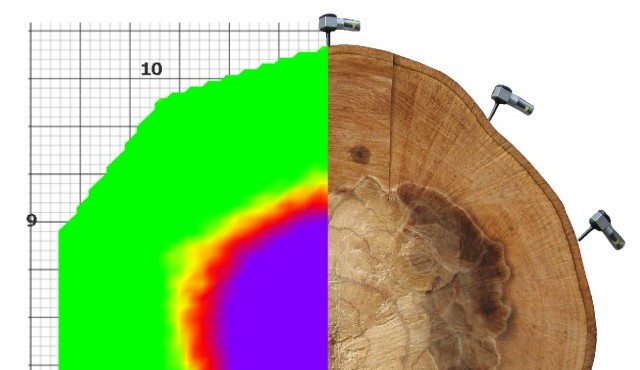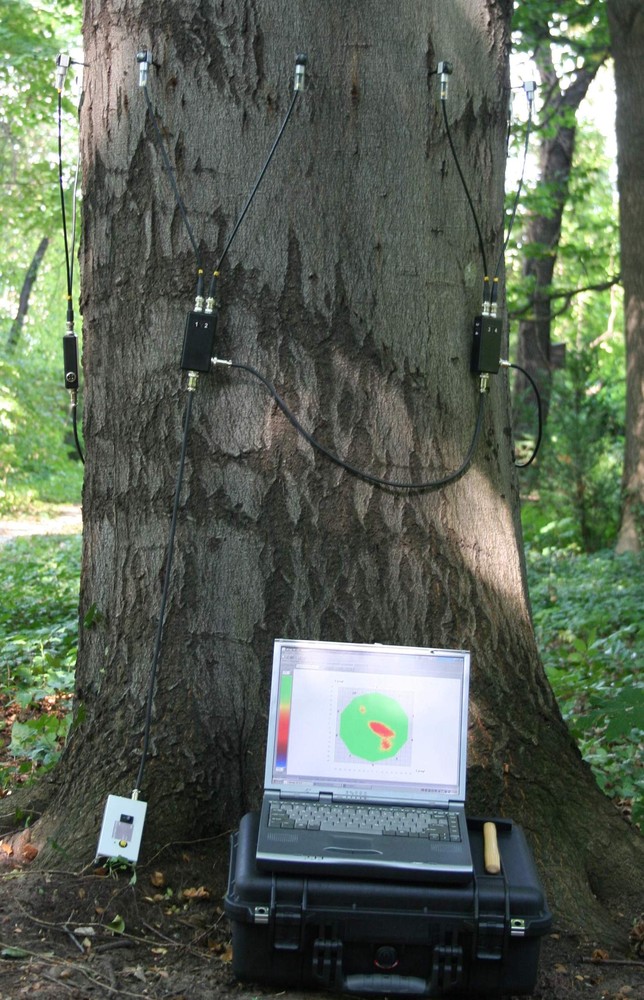
Are trees getting MRI scans? Not quite, but arborists and biologists are now determining tree health by using a new technology -- tomography -- to “scan” the insides of trees.
Until now, a comprehensive review of a tree’s health involved drilling holes into the tree’s core and examining the samples for decay; a process called resistographing. But drilling through the trunk is slow, damages the tree, and the results are not always accurate. .
Tomography, on the other hand, involves sending sound vibrations through the tree without cutting into the wood; a process that is quick, non-invasive, and accurate.

“It’s like x-ray vision in a forest,” says Nicholas Whittaker Dankers, an arborist at Tree Solutions in Seattle, who has been using tomography for the past three years.
Here’s how the technology works: Dankers drives pins and microphones into the bark. Hitting a pin sends sound waves through the tree that are received by microphones on the other side. Sound travels slower through hollow wood, which is a sign of degraded tree health. By analyzing the time it takes the sound vibrations to travel through the tree, Dankers can determine the tree’s level of hollowness, or decomposition. Based on this data, a computer is then used to create a digital, color-coded image of the inside of the tree. Multiple scans up a trunk can create a 3-D model of a column of decay.